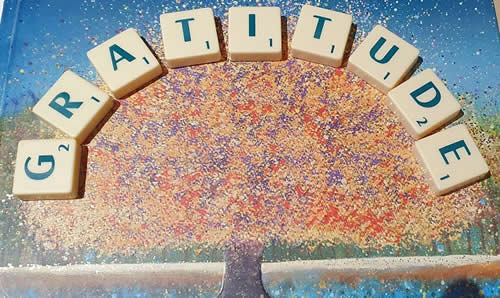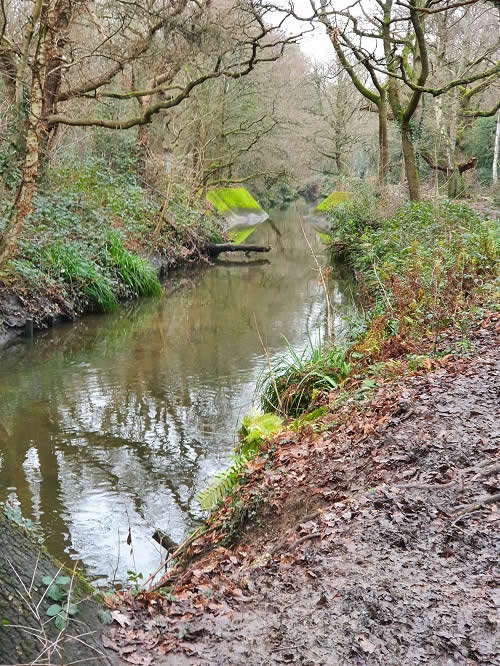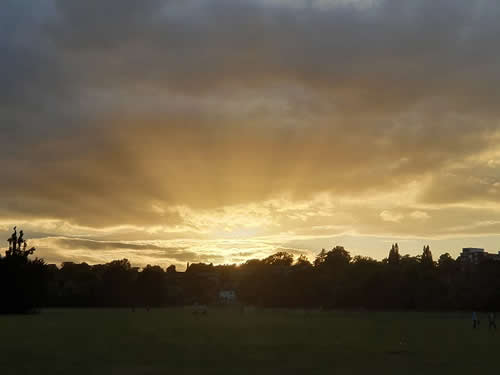Positive Health Online
Your Country

Mindfulness in Everyday Life – Tools to Provide Calm, Reduce Stress and Help Gain Clarity of Thought
listed in meditation, originally published in issue 269 - March 2021
During the pandemic, people are experiencing more stress and anxiety than ever before. This is caused by uncertainty and ever-changing information. It means we are having to adapt and calibrate not weekly or daily, but several times a day.
According to Dr Adrian James, the president of the Royal College of Psychiatrists, the impact of the coronavirus pandemic could present the biggest threat to people’s mental health since the Second World War.[1]
In the workplace, mental health problems among British employees costs the UK economy up to £45 billion every year, says a report from Deloitte.[2] On average, for every £1 spent by employers on helping staff’s mental health, they receive £5 back in investment in reduced absence, staff turnover and presenteeism – when employees function at less than full capacity because of ill health. This report shows that it pays for employers to provide mental health support at work. This can now be done more easily and cost effectively through the use of modern technology.

How does Mindfulness help with people’s mental wellbeing? We spend most of our time either thinking about the future or in the past and Mindfulness teaches us how to live in the present moment without judgment. Through Mindfulness techniques, you can learn to appreciate every moment. It also benefits memory, sleep and productivity at work.
The analogy I use is that just like we top up our monetary bank balance regularly to pay for food and the mortgage, we also need to top up our emotional bank balance, so that when life’s challenges hit us we are more stable and able to deal with them. Through the practice of Mindfulness we become more self-aware and can see more clearly how things impact us and others. Through the lenses of self-awareness we can make some small changes that have a big impact,
Evidence has shown that Mindfulness can help to alleviate stress and depression. A study conducted by the University of Bristol showed that mental health among students could be improved by introducing Mindfulness training. Dr Alice Malpass, Research Fellow and co-author said "At Bristol, we are continuing to increase efforts to find solutions to improve mental health among the student population. Our aim is to find effective new ways of supporting students who may be suffering from stress and anxiety. This study has shown how Mindfulness can help students who might be struggling, in particular medical students, find new ways of relating to the difficulties that arise in their clinical work, studying and wellbeing.”[3]
History of Mindfulness
There are many practices of Mindfulness out there. There is also the link between mindfulness, meditation and yoga.[4] Most of these practices have their roots in Eastern religions. Though contemplation and reflective practices can be found in every religion and back to Pagan times too.
Jon Kabat-Zinn brought Mindfulness from the East to the West when he founded the Center for Mindfulness at the University of Massachusetts Medical School and the Oasis Institute for Mindfulness-Based Professional Education and Training in the USA.[5] This is where Kabat-Zinn developed his Mindfulness-Based Stress Reduction (MBSR) program in 1979, aimed at reducing stress.
Mindfulness Techniques
Mindfulness techniques are practical, down to earth and easy to implement no matter how busy you are. It only take a few minutes a day. Like everything Mindfulness takes practice and so it’s best to start with simple achievable steps. If practised regularly, these techniques will help to alleviate stress, anxiety and encourage relaxation.
I recommend starting with five minutes of Mindfulness a day, five separate minutes a day. You need to stop, focus on the present moment, allow yourself to do nothing and just be. Don’t be too hard on yourself if your mind wanders. Just bring your attention back to the present as often as you can. Here are some of the techniques I use. I demonstrate these in regular webinars and workshops for individuals, employees and small business owners:
- The Breath
Focus on your breath as it is. Simply notice your breath and witness it. There is no need to change anything. Simply witness that life force the breath and observe how you feel. Keep doing this for about five breaths and notice what is happening. If you mind wanders just focus on your breath and use the breath as an anchor to become more present in the here and NOW. There is no right or wrong. Being present and aware is about accepting what is without judgement. The breath is the foundation of Mindfulness and it is with you 24/7. So you can do this anytime anywhere to feel less stressed and more relaxed. Try and do this several times a day. It’s a good idea to put up a post- it note that says “breath” as a reminder, set an alarm on your mobile or use a Mindfulness bell on your smart phone.
When I work with clients, we identify times during the day when they need to concentrate on their breathing. For some people, it’s first thing in the morning as soon as they wake up. We talk through the causes of their stress and how breathing can alleviate it. For example, if you’re a nervous car driver, take a deep breath before you set off. Breathe at the traffic lights and breathe before you get out of the car.
At work when you’re at the computer, take breaks, close your eyes and breathe. Breathe before a difficult phone call or Zoom meeting. Breathe at the end of the day.
Everyone is different – work out at what points of the day you would benefit from using these breathing techniques.

- The Importance of Gratitude
In these difficult times, recognizing, expressing and feeling gratitude for the good things in your life can be a powerful way to counteract negative thoughts or to distract yourself from the endless news feeds that bombard our lives.
Being and feeling truly grateful is attributed to a stronger immune system, better sleep patterns, a more optimistic outlook, feeling happier, feeling less lonely or isolated and being more helpful and generous to others.
Next time you say ‘thank you’ stop and really think about what you are saying thank you for. When out walking, if someone walks round you to adhere to social distancing without you having to get out of their way, think about why you would say thank you and how it makes you feel that someone showed you an act of kindness.
Whether it’s your partner, your family or your friends, relationships are stronger when we express and feel gratitude. Take time to think about what you are grateful for and take time to tell your loved ones how grateful you are to have them in your life. Take a moment to think about a friend you’ve not spoken to for a while and why they’re important to you, then get in touch with them.
Write a gratitude letter. Address it to someone as you would a letter (Dear XXX) and explain why you want to express gratitude to them. Ideally you would read your letter to the person as well, and thereby enhance your own wellbeing AND the wellbeing of the person who you are expressing gratitude towards.
Start a gratitude journal. Each day write down three to five things that you are grateful for.
- Working From Home - Boundaries
As working from home has become the norm, have clear boundaries with start and finish times. Make sure you have a set routine that works for you and try to keep it as close to your normal work day as possible. If necessary, have an alarm to remind you to take breaks.
Try to find somewhere in your home which is as closed off as possible. Your family may be unused to you working from home and may interrupt, so you need to set boundaries. Explain what your working hours are – don’t expect them to assume. If you have a separate room you can use as an office, you can shut the door which makes this easier.
Do have a lunch break and regular tea breaks. At the end of the working day, switch off equipment and pack up your work otherwise it will be a reminder of what you have to do. You could try changing your clothes, do some exercise or go for a walk, which will help to separate work and family time. Whatever works for you.

- Nature
Make time to be in nature even if it just walking round the block. It helps clear the head and gets some exercise in too. While walking, have a mindful moment. Instead of rushing, just slow down the pace and observe things as you walk along. No need to walk the whole way like that. Just try it for a minute or two and notice if your journey is different.
- Mindful Eating
Practise mindful eating. Take time to listen to your physical hunger cues and then eat only until you’re full. Eat slowly and without distraction, engaging all your senses. Imagine where each of the ingredients comes from and what went into creating the dish. Where did the rice come from? Did the local baker provide the bread or did you make your own? Are the eggs from the local farm?
This is another moment to express gratitude and say thank you for the food too.
- Mindful Listening
Explore mindful listening. It’s about listening with presence and not listening to answer. When you speak to someone, just really listen to what they have to say without interrupting. Be present and listen. Listen to a piece of music – this can be uplifting. Create playlists for yourself to support the various stages of your day whether it’s to energize, motivate or relax you.
- Mindful Writing
I recommend to my clients starting a daily journal and spending just a few minutes to write a page a day. The key is not to analyze or judge, just write it down. Even if it’s “I can hear the ticking of the clock,” just carry on. Notice your hand using the pen and writing on the paper. Write slowly and from the heart. It just needs practice – explore the technique and see how it helps you. Some clients find it very helpful. We don’t write with pen and paper anymore – so it’s an uplifting experience and you can get creative here by stretching your imagination.
- Make Time for Rest
Don’t miss out on sleep. Take yourself to bed 30 minutes earlier and start tomorrow more refreshed and ready for a productive day. If you have problems going to sleep, do some breathing exercises.
I recommend a great free app called Insight Timer, which has a huge range of excellent Mindfulness and sleeping meditations.
For more information, visit www.leadyourlife.co.uk

Case Study
One client consulted me regarding her poor sleeping, anger and anxiety problems and we explored how we could potentially work together.
She revealed in our discovery session (which I offer complimentary to anyone considering working with me) that she was struggling with her work, caring for elderly parents and life in general. She decided that my Mindfulness course, which covers the techniques I have shared in this article, as well as other practices, was going to be best for her.
At the first session I asked her, “How much time can you commit to your Mindfulness practice daily?” She said “One minute” to which I said “Yes, let’s start.”
To begin with, she was apprehensive but by the third session, she said she was averaging 20 minutes of Mindfulness a day! She said she realized the value of gratitude and how it had impacted her life now more than ever and that the separate focus of music, eating, creativity and writing had led her in new directions. As her self-awareness increased and her trigger points became more noticeable, she was able to change how she was reacting. After a few sessions with me, she said she was feeling more relaxed, far less stressed, had better boundaries, slept better and had greater self-esteem and confidence. She said her work / life balance was better and she was able to witness the positive impact of her changed behaviour on herself and others. Like many of my clients, she comes to me on a regular basis for “top up” sessions.
References
- https://www.theguardian.com/society/2020/dec/27/covid-poses-greatest-threat-to-mental-health-since-second-world-war
- https://www2.deloitte.com/uk/en/pages/press-releases/articles/poor-mental-health-costs-uk-employers-up-to-pound-45-billion-a-year.html
- https://www.bristol.ac.uk/biology/news/2019/mindfulness-found-to-improve-mental-health-of-students.html
- Gaiswinkler & Unterrainer. The relationship between Yoga Involvement, Mindfulness and Psychological Well-being. https://doi.org/10.1016/j.ctim.2016.03.01 . 2016.
- https://www.umassmemorialhealthcare.org/umass-memorial-center-mindfulness
Comments:
-
No Article Comments available